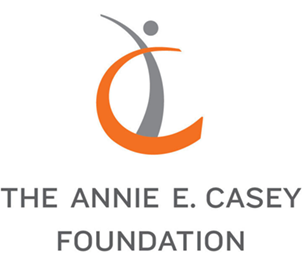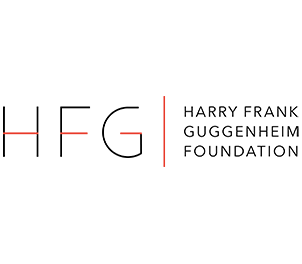In April 2023, CCJ launched the Crime Trends Working Group to continue the important work of grounding debates about crime and criminal justice reform in facts. Composed of 17 diverse leaders from academia, advocacy, law enforcement, government, and the public health sector, the Working Group’s mission is to explore and explain current crime trends while building consensus for significant improvements in the nation’s capacity to produce timely, accurate, and complete crime data.
In mid-2024, the Working Group released a set of recommendations to strengthen the nation’s crime data infrastructure and better equip policymakers with data essential to effectively address community violence and other crime. The recommendations proposed action in multiple areas by federal, state, and local agencies and called for increased appropriations to enable the Bureau of Justice Statistics to assume an expanded role in national crime data reporting.
Note: The late criminologist Richard Rosenfeld, Curators’ Distinguished Professor Emeritus of Criminology and Criminal Justice at the University of Missouri-St. Louis and former president of the American Society of Criminology, was the founding chair of the Working Group and the co-author of our crime trends reports. Rosenfeld, an eminent scholar who was a trusted resource for policymakers and an exceptional interpreter of crime patterns for the media, passed away on January 8, 2024. CCJ is deeply indebted to him for his contributions to our organization and the field.
working group Recommendations

CCJ’s Crime Trends Working Group reached consensus on recommendations to strengthen the nation’s crime data infrastructure and better equip policymakers with timely, accurate, and usable data essential to address community violence and other crime.
Publications

Trends in Gun Theft
Evidence suggests that stolen guns may play a significant role in violent crime, but data on gun thefts is limited. This report examines data on reported gun theft incidents across various jurisdictions.

The Value of NCVS–and How to Improve It
Given the administration’s interest in the NCVS, we surveyed several CCJ members and other experts to ask how NCVS adds to their knowledge about crime patterns and what changes could improve its value and cost-effectiveness.

When Crime Statistics Diverge
This report explores the strengths and limitations of the nation’s two measures of crime and the value of considering both sources when assessing crime trends over time.

Homicide, Most Other Violent Crimes Fall Below Pre-Pandemic Levels in U.S. Cities
New CCJ analysis of 2024 crime trends also shows year-over-year decreases
in 12 of 13 offenses, with only reported shoplifting continuing its recent rise

Crime Trends in U.S. Cities: Year-End 2024 Update
Homicide and most other violent crimes have fallen below pre-pandemic levels in a sample of 40 U.S. cities. CCJ’s year-end 2024 analysis also shows a year-over-year decrease in 12 of 13 major offenses, with shoplifting the lone exception.

Trends in Carjacking: What You Need to Know
This analysis examines carjacking trends from 2018-2023 and compares them with trends for non-carjacking robbery and motor vehicle theft. It also explores offense characteristics for carjacking, including the use of firearms as well as victimization and case clearance rates.

Shoplifting Trends in Time and Space: A Study of Two Major American Cities
This report looks at the prevalence and concentration of shoplifting in two major cities—Los Angeles and Chicago—before, during, and after the COVID-19 pandemic.

Between the Aisles: A Closer Look at Shoplifting Trends
Examining data for the nation’s three largest cities through fall of 2024, this report finds that shoplifting levels remain higher than pre-pandemic rates. It also highlights two conflicting sources of federal data on the crime.

Event Summary: Domestic Violence – Understanding the Data and Policy
On October 23, 2024, the Council on Criminal Justice hosted a live webinar on domestic violence and women’s justice involvement with experts from CCJ’s Women’s Justice Commission (WJC) and Crime Trends Working Group (CTWG).

Violent Victimization is Decreasing—But Not for Everyone
Exploring disparities in the 2023 National Crime Victimization Survey (NCVS), this analysis finds that while overall nonlethal violent victimization fell from 2022, Black Americans experienced rising victimization rates.

Toward a Better Estimate of Domestic Violence in America
Using new methodology that accounts for the underreporting of domestic violence to law enforcement, this analysis estimates that incidents in a sample of 20 large cities are 29% to 53% higher than what official counts show.

Trends in Juvenile Offending: What You Need to Know
What do the data from the National Incident-Based Reporting System (NIBRS) tell us about juvenile crime in the United States? This brief explores the trends and variables such as race, age group, and crime type.
Working Group Members

John Roman (Chair)
Senior Fellow and Director, Center on Public Safety and Justice, NORC at the University of Chicago

Ruth Abaya
Attending Physician, Emergency Department, and Practice-Based Scholar, Center for Violence Prevention, Children's Hospital of Philadelphia

Thomas Abt
Founding Director, Violence Reduction Center, University of Maryland; Senior Fellow, Council on Criminal Justice

Delrice Adams
Executive Director, Illinois Criminal Justice Information Authority

Jeff Asher
Co-Founder, AH Datalytics

Deborah Azrael
Director of Research, Harvard Injury Control Research Center, Harvard T. H. Chan School of Public Health

Jamein Cunningham
Assistant Professor, University of Texas at Austin

Drew Evans
Superintendent, Bureau of Criminal Apprehension, Minnesota Department of Public Safety

Chief Edgardo Garcia
Chief of Police, Dallas Police Department; President, Major Cities Chiefs Association

Brandon Gibson
Chief Operating Officer, State of Tennessee

Michael Nutter
Former President, U.S. Conference of Mayors; Former Mayor, City of Philadelphia

Janet Lauritsen
Curators' Distinguished Professor Emerita, Dept. of Criminology and Criminal Justice, University of Missouri-St. Louis

Kathleen O'Toole
Partner, 21CP Solutions; Former Chief, Seattle Police Department

Fernando Rejón
Executive Director, Urban Peace Institute

Lisa Shoaf
Director, Statistical Analysis Center, Ohio Office of Criminal Justice Services

Keon Turner
Data Analysis and Reporting Team Manager, Virginia Department of State Police
Previous Working Group members

John Buntin
Former Project Director, Crime Trends Working Group

Richard Rosenfeld (founding chair)
Curators' Distinguished Professor Emeritus, Dept. of Criminology and Criminal Justice, University of Missouri-St. Louis
Working Group Liaisons

Brian Griffith
Deputy Assistant Director, Law Enforcement and Technology Services Branch, Criminal Justice Information Services Division, Federal Bureau of Investigation

Shelley Hyland
Senior Statistical Advisor, Bureau of Justice Statistics, Office of Justice Programs, U.S. Department of Justice
Press releases
About The Art
The banner design was created by an adult in custody designer in the Oregon Corrections Enterprises (OCE) Graphic Design program. The mission of OCE, in partnership with the Oregon Department of Corrections, is to promote public safety by providing adults in custody with work and training opportunities in a self-sustaining organization.






